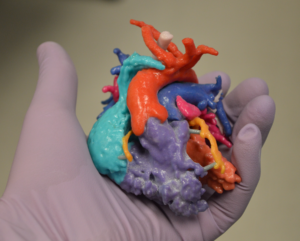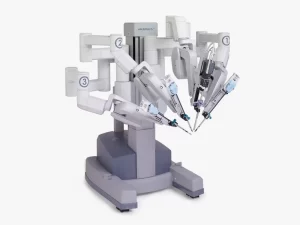Advancements, in the field of surgery have been truly remarkable thanks to technological progress and innovative medical techniques. A noteworthy area of development is invasive surgery, which has completely transformed the landscape of orthopaedics. In this article we will delve into how technology has revolutionized the field explore the trends between minimally invasive procedures and arthroscopic surgery and discuss the numerous benefits associated with embracing these modern techniques.
How has technology influenced orthopaedic surgery?
Technological progress has played a role in making orthopaedic surgery safer, more efficient and less invasive for patients. One groundbreaking advancement is the utilization of robotic assisted systems. These cutting edge machines offer surgeons precision enabling them to carry out procedures with utmost accuracy. In time robotic systems provide feedback that allows surgeons to make necessary adjustments during surgeries and minimize the risk of errors and complications.
Furthermore three 3D) imaging and computer assisted navigation have become tools, in orthopaedic surgery. These technologies empower surgeons to plan operations by creating models of patients anatomy. Surgeons can then simulate procedures beforehand to identify challenges before stepping into the operating room.
Precision planning plays a role, in achieving outcomes particularly in joint replacement surgeries where precise alignment is vital for long term success.

So what’s new in the field of surgery?
Orthopaedics is a evolving field that has seen the emergence of exciting trends in recent years. One notable trend is the use of biologics – harnessing the bodys substances to aid in healing and tissue regeneration. Rich plasma (PRP) therapy and stem cell therapy are examples of treatments gaining popularity for managing orthopaedic conditions.
PRP therapy involves extracting platelets from the patients blood and injecting them into the injured area. These platelets contain growth factors that promote tissue repair and regeneration making PRP therapy for conditions like tendonitis, ligament injuries and osteoarthritis.
On the hand stem cell therapy utilizes the patients stem cells which possess remarkable abilities to transform into various types of cells. When these stem cells are injected into damaged tissues they stimulate the bodys natural healing processes speeding up recovery and alleviating pain.
Additionally a groundbreaking advancement, in joint replacement surgeries is patient implants. Through cutting edge imaging techniques and 3D printing technologies implants can now be customized to match each patients anatomy. This innovation ensures a fit. Enhances long term outcomes.
Are custom implants, in reducing the chances of complications associated with implants and improving function?
Yes arthroscopic surgery is indeed considered an procedure. It involves the insertion of a camera, known as an arthroscope through incisions into the joint. This allows surgeons to view the interior of the joint on a screen enabling them to diagnose and treat conditions.
Compared to surgery arthroscopic procedures generally result in less damage to tissues reduced scarring and faster recovery times for patients. Knee and shoulder arthroscopy are commonly performed to address sports injuries, torn ligaments and cartilage damage.
Is surgery with minimally invasive procedures?
While arthroscopic surgery falls under the umbrella of techniques it’s important to note that not all minimally invasive procedures involve arthroscopy. Minimally invasive surgery is a term encompassing surgical approaches aimed at minimizing trauma to a patients body as much as possible.
For example in orthopedics invasive techniques may involve incisions and specialized instruments, for performing joint replacements, spinal surgeries or fracture fixations.

Advantages of Minimally Invasive Orthopaedic Surgery
The adoption of orthopaedic surgery has brought several noteworthy benefits, for both patients and surgeons. Firstly it results in damage to the surrounding tissues leading to reduced pain and discomfort. This allows patients to recover swiftly and get back to their routines sooner.
Moreover the use of incisions helps minimize scarring, which’s particularly advantageous for cosmetic purposes especially in procedures involving the knees, shoulders and hips. Minimally invasive techniques also lower the risk of infection since the smaller incisions provide opportunities for pathogens to enter the body.
Furthermore shorter hospital stays associated with procedures lead to cost savings for patients as well as healthcare facilities. With time spent in the hospital setting patients can resume their lives more quickly resulting in an enhanced quality of life and greater satisfaction among patients.
From a surgeons perspective invasive techniques offer improved visualization and magnification capabilities. This allows surgeons to perform surgeries with precision. The utilization of technologies, like robotics and computer assisted navigation further enhances skills and decision making processes ultimately leading to superior patient outcomes.
In summary
The field of surgery has undergone changes due, to advancements especially in minimally invasive techniques. Technology has played a role in driving these transformations by equipping surgeons with tools and strategies that greatly benefit patients.
With the introduction of robotic assisted systems biologic treatments and personalized implants the future of surgery holds promise. Patients can now experience recovery times reduced pain levels and improved joint functionality. Surgeons are also empowered to tackle cases, with heightened confidence and precision.
As research and technology continue to advance it is evident that the landscape of surgery will continue evolving. This progress will further enhance patient care. Significantly improve the quality of life for individuals suffering from conditions.
